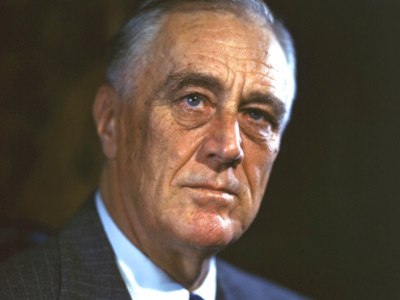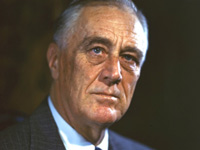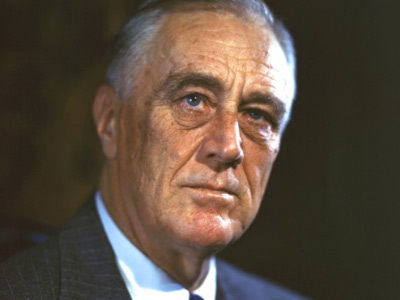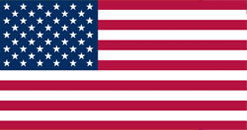Franklin Delano Roosevelt (1882-1945)

Governor of New York (1929–32)
As the Democratic Party presidential nominee in the 1928 election, Smith in turn asked Roosevelt to run for governor in the state election. Roosevelt resisted the entreaties of Smith and others within the party, but relented when party leaders convinced him that only he could defeat the Republican gubernatorial nominee, New York Attorney General Albert Ottinger. Roosevelt won the party's gubernatorial nomination by acclamation, and he once again turned to Louis Howe to lead his campaign. Roosevelt was also joined on the campaign trail by Samuel Irving Rosenman, Frances Perkins, and James Farley, all of whom would become important political associates. While Smith lost the presidency in a landslide, and was defeated in his home state, Roosevelt was narrowly elected governor by a one-percent margin. Roosevelt's election as governor of the most populous state immediately made him a contender in the next presidential election.
Upon taking office, Roosevelt proposed the construction of a series of hydroelectric power plants and sought to address the ongoing farm crisis of the 1920s. Relations between Roosevelt and Smith suffered after Roosevelt chose not to retain key Smith appointees like Robert Moses. Roosevelt and Eleanor established a political understanding that would last for the duration of his political career; she would dutifully serve as the governor's wife but was also be free to pursue her own agenda and interests. He also began holding "fireside chats", in which he directly addressed his constituents via the radio, often using these chats to pressure the New York State Legislature to advance his agenda. Months into his tenure, the Wall Street Crash of 1929 occurred, and the country began sliding into the Great Depression. While President Hoover and many state governors believed that the economic crisis would subside, Roosevelt saw the seriousness of the situation and established a state employment commission. He also became the first governor to publicly endorse the idea of unemployment insurance.
When Roosevelt began his run for a second term in May 1930, he reiterated his doctrine from the campaign two years before: "that progressive government by its very terms, must be a living and growing thing, that the battle for it is never ending and that if we let up for one single moment or one single year, not merely do we stand still but we fall back in the march of civilization." He ran on a platform that called for aid to farmers, full employment, unemployment insurance, and old-age pensions. His Republican opponent could not overcome the public's criticism of the Republican Party during the economic downturn, and Roosevelt was elected to a second term by a margin of 14%. With the Hoover administration resisting proposals to directly address the economic crisis, Governor Roosevelt proposed an economic relief package and the establishment of the Temporary Emergency Relief Administration to distribute those funds. Led first by Jesse I. Straus and then by Harry Hopkins, the agency assisted well over one third of New York's population between 1932 and 1938.
HISTORY

RESOURCES
This article uses material from the Wikipedia article "Franklin Delano Roosevelt (1882-1945)", which is released under the Creative Commons Attribution-Share-Alike License 3.0.
© Stories Preschool. All Rights Reserved.










